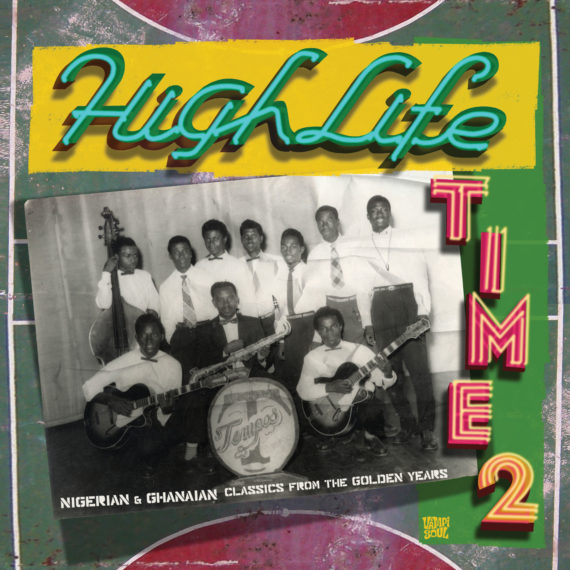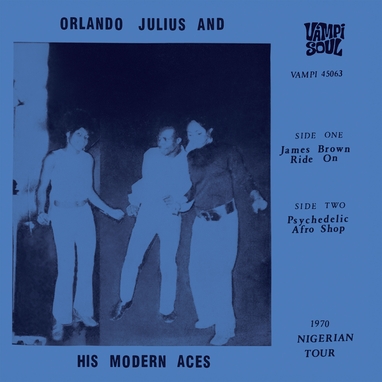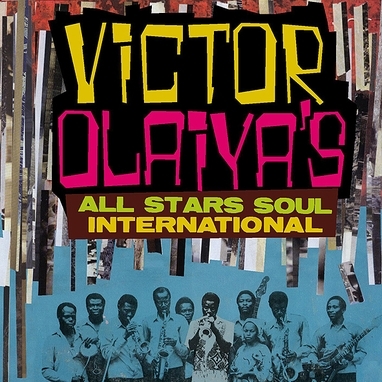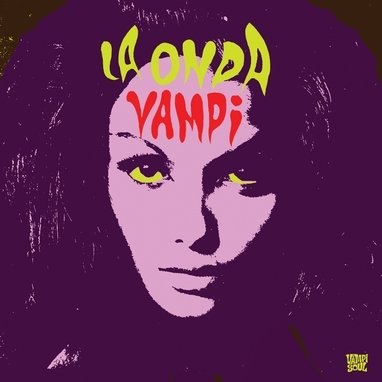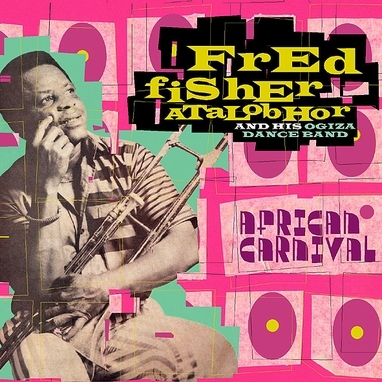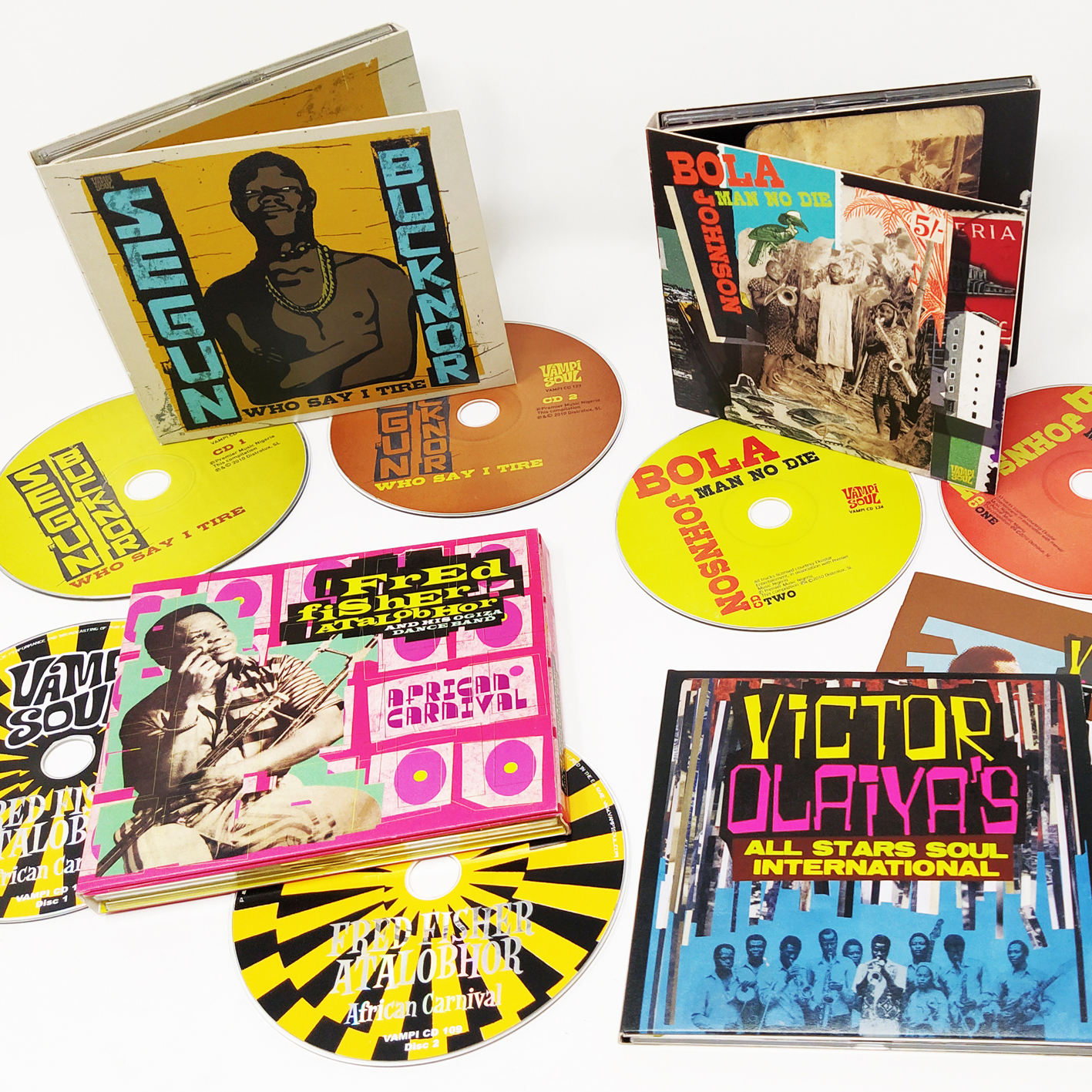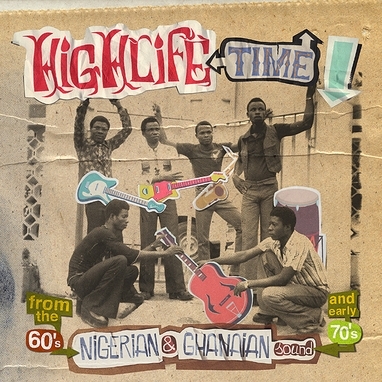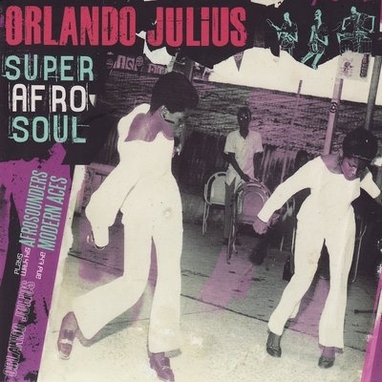VVAA
Highlife Time Vol.2
Vampisoul
VVAA
Highlife Time Vol.2
More Nigerian and Ghanaian highlife classics on the second volume of our comprehensive series. This new selection guides the listener into the highlife world far enough to show the many different angles and approaches representing this irresistible music. Featuring tracks by essential artists of the genre such as ET Mensah & The Tempos, Dr Victor Olaiya, Prince Nico Mbarga, Dr Sir Warrior, Rex Lawson… Includes extensive notes by experts Rita May and Max Reinhardt and artist photos
Professor John Collins (musician, composer, prolific writer about African music and eminent musicologist at the University of Ghana) has traced the roots of highlife music back to the 1880s on the Gold Coast, now known as Ghana. He sees it as a fusion of rhythms from the West African coast, from Europe, from the Caribbean and from African Americans in both South and North America. During the Second World War, swing was introduced by British and American servicemen based in Ghana. As a result, the large dance orchestras gave way to the smaller highlife dance bands. The most famous was the groundbreaking Tempos band, led by trumpeter ET Mensah, which incorporated Afro-Cuban percussion, played by the band’s finest drummer, the pioneering Kofi Ghanaba (aka Guy Warren of Ghana). It was their brilliant fusion style that made such an impact on Nigeria in the 1950s. Nigerian journalist Benson Idonije, however, is by no means alone in believing that while Mensah must be saluted for the cultural legacy he left behind, he was not responsible for introducing highlife to Nigeria: Highlife has always been with us (Nigerians), at least since the guitar or mandolin banjo was introduced to our folk and indigenous music to bring about its very first contact with Western instrumentation and music. That type of music just did not attract the kind of mass appeal that Mensah’s Tempos band generated. When Mensah’s highlife first blew into Nigeria, Bobby Benson’s Jam Session Band were playing mostly swing and ballroom tunes along with the other leading Nigerian dance bands. Bobby had the nous to realize which way the musical wind was blowing and highlife now began to dominate his repertoire. Over time his 11-piece band featured the future stars of Nigerian highlife: Sir Victor Uwaifo, Bayo Martins and trumpet players like Zeal Onyia, Roy Chicago, Chief Bill Friday and, of course, an ambitious young player called Victor Olaiya. By 1952, Olaiya had become the leader of Benson’s second band, Alfa’s Carnival Group. But then he felt his moment had arrived and launched his own highlife band, the Cool Cats, at the West End Café in Lagos. The many influential Nigerian musicians his bands spawned and nurtured over the next two decades included Sir Victor Uwaifo, John Akintola (aka Roy Chicago), Peter King, Cardinal Rex Jim Lawson, Eddie Okonta, Agun Norris (of Empire Orchestra), Celestine Ukwu (of Anambra), Bala Miller, AC Arinze, Osita Osadebe and, most famous of all, Sunny Ade, Tony Allen and Fela Kuti. Highlife became the fashionable soundtrack to independence in both countries (Ghana 1957, Nigeria 1960) and an essential foundation to the new musical styles that were to develop, but as the 60s rolled on the music evolved differently in each country, diverging as different forces came into play. However, in both countries economics meant that big highlife bands were difficult to maintain, and the ever growing popularity of the electric guitar, aided and abetted by the sounds of the successive waves of the beat, blues and rock booms from the USA and the UK, meant that guitar highlife became a very cool direction to take. Rex Lawson and Sir Victor Uwaifo led the development of the guitar-oriented variant of highlife, but the terrible crisis of the 1967-70 Nigerian (or Biafran) Civil War brought its own set of musical changes. In 1971, the Soul to Soul music festival was held in Accra. Several legendary American musicians played, including Wilson Pickett, Ike & Tina Turner and Carlos Santana, and in the subsequent Ghanaian roots revival new guitar bands and stars arose in Ghana, including the Ashanti Brothers, Sweet Talks, Eric Agyeman, Nana Ampadu & the African Brothers. And so the tides of music from Ghana and Nigeria ebb and flow. Their shared highlife heritage deserves to be blaring out of speakers, heating dance floors and lighting the fuse at parties for generations to come.
Productos relacionados
More Nigerian and Ghanaian highlife classics on the second volume of our comprehensive series. This new selection guides the listener into the highlife world far enough to show the many different angles and approaches representing this irresistible music. Featuring tracks by essential artists of the genre such as ET Mensah & The Tempos, Dr Victor Olaiya, Prince Nico Mbarga, Dr Sir Warrior, Rex Lawson… Includes extensive notes by experts Rita May and Max Reinhardt and artist photos
Professor John Collins (musician, composer, prolific writer about African music and eminent musicologist at the University of Ghana) has traced the roots of highlife music back to the 1880s on the Gold Coast, now known as Ghana. He sees it as a fusion of rhythms from the West African coast, from Europe, from the Caribbean and from African Americans in both South and North America. During the Second World War, swing was introduced by British and American servicemen based in Ghana. As a result, the large dance orchestras gave way to the smaller highlife dance bands. The most famous was the groundbreaking Tempos band, led by trumpeter ET Mensah, which incorporated Afro-Cuban percussion, played by the band’s finest drummer, the pioneering Kofi Ghanaba (aka Guy Warren of Ghana). It was their brilliant fusion style that made such an impact on Nigeria in the 1950s. Nigerian journalist Benson Idonije, however, is by no means alone in believing that while Mensah must be saluted for the cultural legacy he left behind, he was not responsible for introducing highlife to Nigeria: Highlife has always been with us (Nigerians), at least since the guitar or mandolin banjo was introduced to our folk and indigenous music to bring about its very first contact with Western instrumentation and music. That type of music just did not attract the kind of mass appeal that Mensah’s Tempos band generated. When Mensah’s highlife first blew into Nigeria, Bobby Benson’s Jam Session Band were playing mostly swing and ballroom tunes along with the other leading Nigerian dance bands. Bobby had the nous to realize which way the musical wind was blowing and highlife now began to dominate his repertoire. Over time his 11-piece band featured the future stars of Nigerian highlife: Sir Victor Uwaifo, Bayo Martins and trumpet players like Zeal Onyia, Roy Chicago, Chief Bill Friday and, of course, an ambitious young player called Victor Olaiya. By 1952, Olaiya had become the leader of Benson’s second band, Alfa’s Carnival Group. But then he felt his moment had arrived and launched his own highlife band, the Cool Cats, at the West End Café in Lagos. The many influential Nigerian musicians his bands spawned and nurtured over the next two decades included Sir Victor Uwaifo, John Akintola (aka Roy Chicago), Peter King, Cardinal Rex Jim Lawson, Eddie Okonta, Agun Norris (of Empire Orchestra), Celestine Ukwu (of Anambra), Bala Miller, AC Arinze, Osita Osadebe and, most famous of all, Sunny Ade, Tony Allen and Fela Kuti. Highlife became the fashionable soundtrack to independence in both countries (Ghana 1957, Nigeria 1960) and an essential foundation to the new musical styles that were to develop, but as the 60s rolled on the music evolved differently in each country, diverging as different forces came into play. However, in both countries economics meant that big highlife bands were difficult to maintain, and the ever growing popularity of the electric guitar, aided and abetted by the sounds of the successive waves of the beat, blues and rock booms from the USA and the UK, meant that guitar highlife became a very cool direction to take. Rex Lawson and Sir Victor Uwaifo led the development of the guitar-oriented variant of highlife, but the terrible crisis of the 1967-70 Nigerian (or Biafran) Civil War brought its own set of musical changes. In 1971, the Soul to Soul music festival was held in Accra. Several legendary American musicians played, including Wilson Pickett, Ike & Tina Turner and Carlos Santana, and in the subsequent Ghanaian roots revival new guitar bands and stars arose in Ghana, including the Ashanti Brothers, Sweet Talks, Eric Agyeman, Nana Ampadu & the African Brothers. And so the tides of music from Ghana and Nigeria ebb and flow. Their shared highlife heritage deserves to be blaring out of speakers, heating dance floors and lighting the fuse at parties for generations to come.
Productos relacionados
Highlife Time Vol.2
More Nigerian and Ghanaian highlife classics on the second volume of our comprehensive series. This new selection guides the listener into the highlife world far enough to show the many different angles and approaches representing this irresistible music. Featuring tracks by essential artists of the genre such as ET Mensah & The Tempos, Dr Victor Olaiya, Prince Nico Mbarga, Dr Sir Warrior, Rex Lawson… Includes extensive notes by experts Rita May and Max Reinhardt and artist photos
Professor John Collins (musician, composer, prolific writer about African music and eminent musicologist at the University of Ghana) has traced the roots of highlife music back to the 1880s on the Gold Coast, now known as Ghana. He sees it as a fusion of rhythms from the West African coast, from Europe, from the Caribbean and from African Americans in both South and North America. During the Second World War, swing was introduced by British and American servicemen based in Ghana. As a result, the large dance orchestras gave way to the smaller highlife dance bands. The most famous was the groundbreaking Tempos band, led by trumpeter ET Mensah, which incorporated Afro-Cuban percussion, played by the band’s finest drummer, the pioneering Kofi Ghanaba (aka Guy Warren of Ghana). It was their brilliant fusion style that made such an impact on Nigeria in the 1950s. Nigerian journalist Benson Idonije, however, is by no means alone in believing that while Mensah must be saluted for the cultural legacy he left behind, he was not responsible for introducing highlife to Nigeria: Highlife has always been with us (Nigerians), at least since the guitar or mandolin banjo was introduced to our folk and indigenous music to bring about its very first contact with Western instrumentation and music. That type of music just did not attract the kind of mass appeal that Mensah’s Tempos band generated. When Mensah’s highlife first blew into Nigeria, Bobby Benson’s Jam Session Band were playing mostly swing and ballroom tunes along with the other leading Nigerian dance bands. Bobby had the nous to realize which way the musical wind was blowing and highlife now began to dominate his repertoire. Over time his 11-piece band featured the future stars of Nigerian highlife: Sir Victor Uwaifo, Bayo Martins and trumpet players like Zeal Onyia, Roy Chicago, Chief Bill Friday and, of course, an ambitious young player called Victor Olaiya. By 1952, Olaiya had become the leader of Benson’s second band, Alfa’s Carnival Group. But then he felt his moment had arrived and launched his own highlife band, the Cool Cats, at the West End Café in Lagos. The many influential Nigerian musicians his bands spawned and nurtured over the next two decades included Sir Victor Uwaifo, John Akintola (aka Roy Chicago), Peter King, Cardinal Rex Jim Lawson, Eddie Okonta, Agun Norris (of Empire Orchestra), Celestine Ukwu (of Anambra), Bala Miller, AC Arinze, Osita Osadebe and, most famous of all, Sunny Ade, Tony Allen and Fela Kuti. Highlife became the fashionable soundtrack to independence in both countries (Ghana 1957, Nigeria 1960) and an essential foundation to the new musical styles that were to develop, but as the 60s rolled on the music evolved differently in each country, diverging as different forces came into play. However, in both countries economics meant that big highlife bands were difficult to maintain, and the ever growing popularity of the electric guitar, aided and abetted by the sounds of the successive waves of the beat, blues and rock booms from the USA and the UK, meant that guitar highlife became a very cool direction to take. Rex Lawson and Sir Victor Uwaifo led the development of the guitar-oriented variant of highlife, but the terrible crisis of the 1967-70 Nigerian (or Biafran) Civil War brought its own set of musical changes. In 1971, the Soul to Soul music festival was held in Accra. Several legendary American musicians played, including Wilson Pickett, Ike & Tina Turner and Carlos Santana, and in the subsequent Ghanaian roots revival new guitar bands and stars arose in Ghana, including the Ashanti Brothers, Sweet Talks, Eric Agyeman, Nana Ampadu & the African Brothers. And so the tides of music from Ghana and Nigeria ebb and flow. Their shared highlife heritage deserves to be blaring out of speakers, heating dance floors and lighting the fuse at parties for generations to come.
More Nigerian and Ghanaian highlife classics on the second volume of our comprehensive series. This new selection guides the listener into the highlife world far enough to show the many different angles and approaches representing this irresistible music. Featuring tracks by essential artists of the genre such as ET Mensah & The Tempos, Dr Victor Olaiya, Prince Nico Mbarga, Dr Sir Warrior, Rex Lawson… Includes extensive notes by experts Rita May and Max Reinhardt and artist photos
Professor John Collins (musician, composer, prolific writer about African music and eminent musicologist at the University of Ghana) has traced the roots of highlife music back to the 1880s on the Gold Coast, now known as Ghana. He sees it as a fusion of rhythms from the West African coast, from Europe, from the Caribbean and from African Americans in both South and North America. During the Second World War, swing was introduced by British and American servicemen based in Ghana. As a result, the large dance orchestras gave way to the smaller highlife dance bands. The most famous was the groundbreaking Tempos band, led by trumpeter ET Mensah, which incorporated Afro-Cuban percussion, played by the band’s finest drummer, the pioneering Kofi Ghanaba (aka Guy Warren of Ghana). It was their brilliant fusion style that made such an impact on Nigeria in the 1950s. Nigerian journalist Benson Idonije, however, is by no means alone in believing that while Mensah must be saluted for the cultural legacy he left behind, he was not responsible for introducing highlife to Nigeria: Highlife has always been with us (Nigerians), at least since the guitar or mandolin banjo was introduced to our folk and indigenous music to bring about its very first contact with Western instrumentation and music. That type of music just did not attract the kind of mass appeal that Mensah’s Tempos band generated. When Mensah’s highlife first blew into Nigeria, Bobby Benson’s Jam Session Band were playing mostly swing and ballroom tunes along with the other leading Nigerian dance bands. Bobby had the nous to realize which way the musical wind was blowing and highlife now began to dominate his repertoire. Over time his 11-piece band featured the future stars of Nigerian highlife: Sir Victor Uwaifo, Bayo Martins and trumpet players like Zeal Onyia, Roy Chicago, Chief Bill Friday and, of course, an ambitious young player called Victor Olaiya. By 1952, Olaiya had become the leader of Benson’s second band, Alfa’s Carnival Group. But then he felt his moment had arrived and launched his own highlife band, the Cool Cats, at the West End Café in Lagos. The many influential Nigerian musicians his bands spawned and nurtured over the next two decades included Sir Victor Uwaifo, John Akintola (aka Roy Chicago), Peter King, Cardinal Rex Jim Lawson, Eddie Okonta, Agun Norris (of Empire Orchestra), Celestine Ukwu (of Anambra), Bala Miller, AC Arinze, Osita Osadebe and, most famous of all, Sunny Ade, Tony Allen and Fela Kuti. Highlife became the fashionable soundtrack to independence in both countries (Ghana 1957, Nigeria 1960) and an essential foundation to the new musical styles that were to develop, but as the 60s rolled on the music evolved differently in each country, diverging as different forces came into play. However, in both countries economics meant that big highlife bands were difficult to maintain, and the ever growing popularity of the electric guitar, aided and abetted by the sounds of the successive waves of the beat, blues and rock booms from the USA and the UK, meant that guitar highlife became a very cool direction to take. Rex Lawson and Sir Victor Uwaifo led the development of the guitar-oriented variant of highlife, but the terrible crisis of the 1967-70 Nigerian (or Biafran) Civil War brought its own set of musical changes. In 1971, the Soul to Soul music festival was held in Accra. Several legendary American musicians played, including Wilson Pickett, Ike & Tina Turner and Carlos Santana, and in the subsequent Ghanaian roots revival new guitar bands and stars arose in Ghana, including the Ashanti Brothers, Sweet Talks, Eric Agyeman, Nana Ampadu & the African Brothers. And so the tides of music from Ghana and Nigeria ebb and flow. Their shared highlife heritage deserves to be blaring out of speakers, heating dance floors and lighting the fuse at parties for generations to come.

